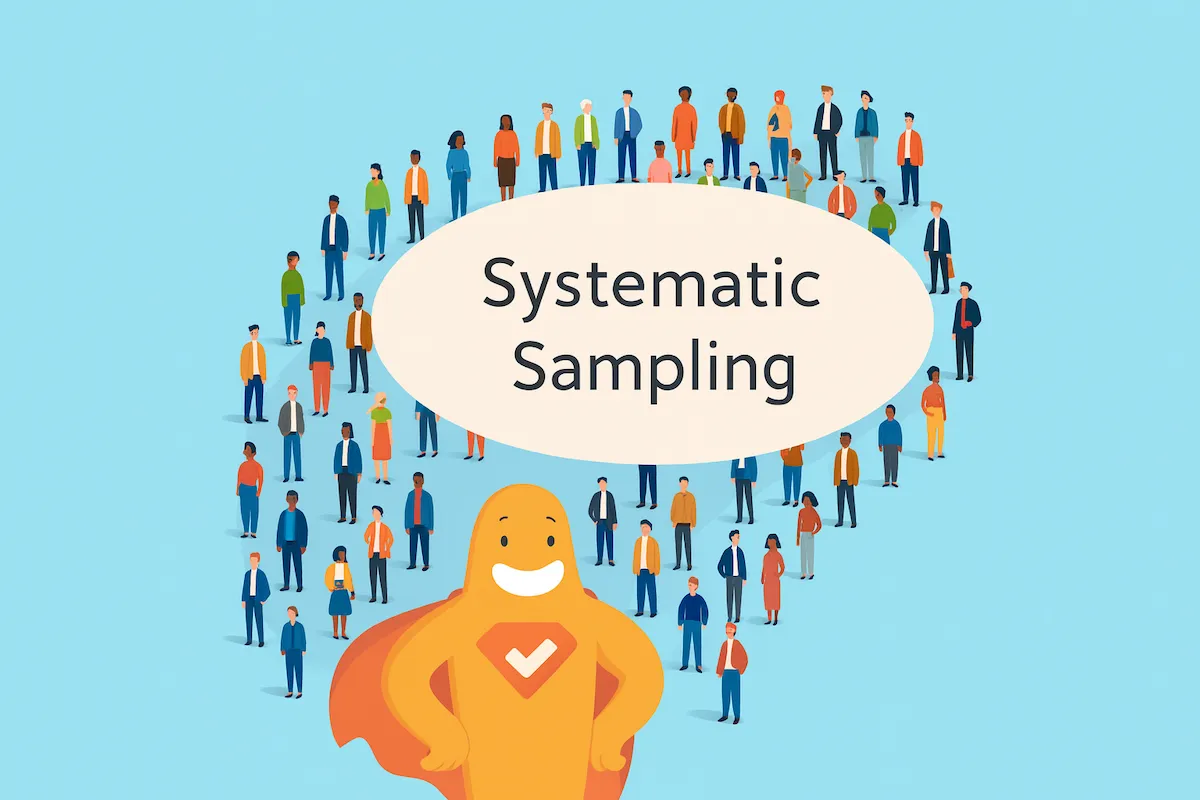Environmental surveys play a key role in assessing public awareness, attitudes, and behaviors toward issues like climate change, pollution, recycling, and sustainability. Effective surveys require clear language, balanced question types, and unbiased phrasing to ensure reliable results. When designing an environmental survey, it’s essential to provide context, avoid leading or double-barreled questions, and minimize sampling bias by reaching diverse audiences. Demographics such as age, education, and location greatly influence responses, so tailoring questions accordingly improves accuracy. Finally, protecting data privacy builds trust and encourages participation. Analyzing survey results helps governments, organizations, and researchers inform environmental policies, sustainability strategies, and public awareness initiatives.
Recent and significant ecological events have shone a spotlight on ongoing environmental issues and concerns. From natural events, such as storms, to human-caused events like deforestation and pollution, it has become clear that there is an urgent need for more comprehensive and collaborative environmental stewardship.
Surveying is a crucial step in evaluating environmental issues and gathering data for informed decision-making.
When creating or responding to an environmental survey, it is important to clearly describe environmental events and issues, including their location, purpose, and potential impacts, to ensure a thorough understanding and assessment.
But is it clear to everyone? To find out what the public understands about ecological events and environmental issues, environmental surveys are becoming more common.
Create Your Environmental Survey Now For FREE!
What Is An Environmental Site Assessment Survey?
A survey about the environment is a questionnaire designed to gather people’s opinions, knowledge, attitudes, and behaviors related to environmental issues. The scope of environmental surveys can vary widely depending on the survey’s objectives, and typically assesses various environmental topics to systematically determine conditions and potential impacts. Environmental surveys or sustainability surveys could focus on a variety of topics, such as:
- Climate Change: Awareness, beliefs, and concerns about global warming.
- Pollution: Opinions on air, water, and land pollution, including identifying whether pollutants are present in the environment.
- Recycling & Waste Management: Personal recycling habits and views on waste reduction.
- Energy Use: Preferences for renewable energy and conservation efforts.
- Biodiversity & Conservation: Thoughts on protecting wildlife and natural habitats.
- Sustainable Practices: Attitudes toward eco-friendly lifestyles and policies.
Conducting an Environmental Site Assessment
Conducting an environmental site assessment is a vital process for anyone involved in property development, commercial real estate transactions, or projects located on land with a history of industrial or commercial use. Banks and other lenders often require an environmental site assessment before approving a loan for property purchase or development. An environmental site assessment (ESA) is designed to evaluate a property for potential environmental hazards, such as contamination from toxic chemicals, pollutants, or other hazardous substances that could impact the environment or human health.
The assessment process is typically divided into two main phases: Phase I and Phase II. The costs associated with environmental site assessments can vary depending on the property’s characteristics, and these costs may be included in business loans. During a Phase I environmental site assessment, professionals conduct a thorough review of the property’s historical data, including past uses, records of spills, and any previous environmental reports. This phase also involves a site inspection to identify any visible signs of environmental risks, such as stained soil, storage tanks, or evidence of asbestos or lead-based paint. The assessment includes evaluating environmental conditions and determining if contaminants such as oil, mercury, or radon are present. The goal is to determine whether there is a reasonable likelihood of contamination or other environmental concerns that warrant further investigation.
Create Your Environmental Survey Now For FREE!
If Phase I identifies potential issues, a Phase II assessment is conducted. This phase involves more extensive testing and analysis, such as collecting soil, groundwater, or air samples to detect the presence and extent of hazardous substances. The results help determine the level of environmental contamination and the future potential for additional risks to property use, construction, or operation.
Environmental site assessments are especially important for properties that have been previously developed or contain existing buildings, as these may have a higher risk of contamination due to past activities or building materials. Environmental site assessments are essential for protecting both the environment and public health. They help property owners, developers, and lenders identify and evaluate environmental risks, fulfill due diligence requirements, and avoid costly liabilities associated with contaminated sites. ESAs help mitigate liability for property owners and lenders by identifying and addressing environmental hazards early in the process. ESAs are often requested by buyers, lenders, or regulatory agencies as part of due diligence. The assessment process involves determining the level of risk and whether regulatory approval is required before proceeding with a project. Completed reports must be submitted to agencies for review and approval as part of compliance and project advancement. The substance of environmental assessment forms is regularly updated to reflect current environmental standards and regulatory requirements, ensuring that the process remains aligned with modern best practices. By completing a thorough assessment in accordance with regulatory guidance, stakeholders can make informed decisions, implement necessary measures to address environmental hazards, and ensure the safe and sustainable development of the property.
Create Your Environmental Survey Now For FREE!
Questions To Ask On An Environmental Survey
If you want to survey people about the environment, whether it’s a climate change survey, a sustainability awareness survey, or something else, you can ask questions that help gauge their awareness, concerns, and behaviors related to environmental issues. Here are examples:
1. General Awareness & Concern
- Do you believe in climate change? (Multiple Choice: Yes, No, Unsure)
- Are you concerned about environmental issues? (Scale 1-5)
- What do you think is the most serious environmental problem today? (Image Selection: Climate Change, Pollution, Deforestation, Endangered Animals, etc.)
2. Climate Change & Pollution
- Do you believe human activities contribute to climate change? (Yes, No, Not sure)
- Have you noticed environmental changes in your local area? (Yes, No, Not Sure)
- What actions do you take to reduce pollution? (Multiple Choice: Use public transport, Recycle, Reduce Plastic Use, Advocate, etc.)
3. Recycling & Waste Management
- How often do you recycle? (Multiple Choice: Never, Sometimes, Always)
- What prevents you from recycling more? (Lack of Facilities, Time Constraints, Not Enough Information, “I’m Just One Person,” etc.)
- Would you recycle more if it were easier to do?
4. Sustainable Living
- Do you actively try to reduce your energy consumption? (Thumbs: Yes/No)
- Would you be willing to pay more for eco-friendly products? (Multiple Choice: Yes, No, Depends How Much)
- Do you try to watch your water consumption? (Thumbs: Yes/No). If yes, how? (Multiple Choice: Short Showers, Wash Only Full Loads, Collect Rainwater For Gardening, etc.)
5. Government & Policy
- Do you think the government is doing enough to protect the environment? (Multiple Choice: Yes, No, Not sure)
- What environmental policies do you support the most? (Multiple Choice: Banning Single-use Plastics, Investing in Renewable Energy, Stricter Pollution Laws, etc.)
- Do you think homes that invest in solar power should receive tax credits? (Multiple Choice: Yes, No, Unsure)
Create Your Environmental Survey Now For FREE!
Considerations When Creating An Environmental Survey
When creating an environmental survey, consider the following key aspects to ensure it’s effective, relevant, and insightful:
1. Choose the Right Question Types
Avoid limiting responses to just “Yes” or “No” unless you simply want quick insights. When more nuance is needed, try some of the following types of quantitative and qualitative survey questions, all of which can be found on the SurveyLegend platform.
- Multiple Choice: Good for structured data and comparisons.
- Opinion Scale (1-10 ratings): Measures attitudes or levels of concern.
- Image Questions: To easily convey material without language barriers, etc.
- Open-ended Questions: Allow you to get more detailed opinions, but are harder to analyze.
Ensuring your survey is complete is essential to gathering all necessary information for a thorough analysis.
2. Keep It Clear & Concise
Avoid technical or complex language, e.g., “carbon sequestration” or “anthropogenic emissions,” unless your audience is familiar with these terms. Simple, clear language that everyone can understand will garner the best results for general audiences. Also, try to keep the survey short (5-15 minutes) to prevent fatigue; if it’s a very long survey, consider offering survey incentives for participation (a $25 gift card, perhaps).
3. Provide Context for Questions
Environmental topics can get confusing for those not well-versed in the topic. So, try to provide context for questions when possible so respondents can make informed choices. Instead of asking “Do you support renewable energy?” rephrase the question as, “Would you support government investment in solar and wind energy?”
4. Avoid Leading Questions
Avoid a leading question that “leads” people to respond in a certain manner. For example, replace “Don’t you think climate change is a serious issue?” with the more neutral “Are you concerned about climate change?” Also, be cognizant of double-barreled questions, which pose two questions that could have different answers in one. For example, “Are you in favor of recycling and renewable energy?” Someone may be in favor of one or the other, but the question boxes them in.
5. Watch Out For Sampling Bias
Sampling bias can cause accuracy issues. For example, according to the National Institute of Health, liberal respondents are more likely to be in favor of sustainability policies, while conservative respondents may not. So, be sure your survey will reach both groups; for example, publish your survey on CNN and Fox News to get a sampling of both groups. Another example would be online polls not representing older demographics well, as they are less likely to be on the internet. So, supplement them with mail-in surveys or phone surveys.
6. Consider Demographics
People’s attitudes toward the environment can vary considerably based on demographics. For example, younger generations may consider sustainability a top priority while older generations may not. Other demographics that could impact a survey on the environment include education level, political affiliation, and location. Of course, try not to ask for unnecessary personal details that may make respondents uncomfortable and lead to non-response or drop-outs.
7. Ensure Data Privacy
If collecting personal data, clearly state how it will be used, and be sure to follow privacy guidelines. Anonymous surveys encourage honest responses; however, this makes it difficult to perform follow-ups. SurveyLegend makes it easy to keep results confidential or anonymous, and surveys are highly secure with top-notch encryption to put respondents at ease.
Create Your Environmental Survey Now For FREE!
Using Environmental Survey Results
Following completion of your survey on the environment, statistical tools can help identify trends, patterns, and correlations, comparing responses across demographics and identifying concerns and behaviors within the public realm (SurveyLegend’s robust analytics can help with this). After gathering the data, a thorough evaluation of the survey results is essential to inform decision-making and strategy development. Once key takeaways have been identified, it’s time to share the results! Most results, depending on who or what agency conducted the survey, are presented or used as follows:
- Reports & Publications. This may be for academic papers or policy briefs, newspapers, magazines, and other media outlets.
- Media & Awareness Campaigns. Insights gained from environmental surveys can be used to inform environmental education efforts through broadcast campaigns, social media, and so on. They may also be used to address public misconceptions or knowledge gaps.
- Government & Policymakers. Results can be given to government agencies and policymakers to help advocate for new policies or influence policy decisions and sustainability programs.
- Corporations & Organizations. Businesses and nonprofits can use the results to create or guide sustainability strategies.
Environmental Survey Example
Here’s a sample environmental survey created using SurveyLegend. You’ll see branding at the top, which lends credibility and increases response rates, plus a variety of types of survey questions. The background imagery can easily be changed out, as can font size, font type, and much more. Maps or spatial data can also be included in environmental surveys to provide additional context or information. You can make these surveys completely your own.

Conclusion
Surveying the environment provides valuable insights into public awareness, concerns, and behaviors regarding sustainability. The data collected can help shape policies, initiatives, and educational campaigns aimed at promoting environmental responsibility. By analyzing survey results, organizations and policymakers can better address key environmental issues and encourage more sustainable practices. Ready to get started? SurveyLegend has you covered. Get started today for free!
How concerned are you about the environment? What environmental concerns do you plan to survey about? We’d love to hear more in the comments!
Create Your Environmental Survey Now For FREE!
Frequently Asked Questions (FAQs)
What is an environmental survey, and why is it important?
An environmental survey gathers people’s knowledge, attitudes, and behaviors related to ecological issues such as climate change, pollution, recycling, and conservation. These surveys help organizations, researchers, and policymakers understand public awareness and concerns, identify trends, and develop more effective environmental policies and sustainability initiatives.
What should I consider when designing an environmental survey?
When designing an environmental survey, focus on clarity, fairness, and relevance. Choose suitable question types (e.g., multiple choice, scales, open-ended), use clear and simple language, provide context where needed, and avoid technical jargon. Keep surveys concise—ideally 5–15 minutes—to maintain respondent engagement and ensure high-quality responses.
How can I avoid bias in my environmental survey results?
Bias can appear through leading questions, sampling errors, or limited respondent diversity. To minimize it, phrase questions neutrally, avoid double-barreled wording (asking two questions in one), and ensure a balanced sample of participants across demographics and viewpoints. For example, distribute your survey through multiple media channels to reach different political and age groups.
What are the key ethical and privacy considerations when collecting environmental data?
Always communicate how respondents’ data will be used, stored, and protected. If personal information is collected, follow privacy regulations and provide an option for anonymity. Anonymous or confidential surveys tend to yield more honest responses. Platforms like SurveyLegend include encryption and privacy settings to help safeguard participant data.
How are environmental survey results used?
Results from environmental surveys can drive policy change, corporate sustainability strategies, and public education campaigns. They are often published in reports, used in media awareness efforts, or shared with government agencies and nonprofits to advocate for better environmental protection and sustainable development practices.



